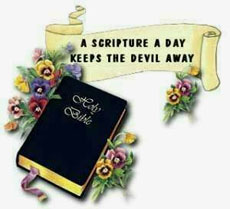My Small Group Looks Like Me
Why some multiethnic churches don’t mandate diversity at gatherings.

On any given Sunday at New Life Fellowship, worshipers from more than 75 ethnic backgrounds gather at the church’s three services in Queens, New York City. But during the week, an increasing number of them go to small groups intentionally split along ethnic lines.
Congregations like New Life face a challenge when it comes to small groups: the things that make small groups thrive—like common interests, backgrounds, and culture—often work against the church’s goal of building multiethnic community.
Some church leaders believe homogenous small groups actually attract diversity. At New Life, ethnic fellowships function as a “great entry point into a multiethnic church,” said small group pastor Phil Varghese, the son of Indian immigrants.
“It’s a cultural shock for newcomers to see so many people groups gathering,” he said. “We’re building Spanish-language and Filipino, South Asian, and Indonesian ethnic fellowships.”
Such groups can make new immigrants feel at home. Knowing that they can find weekday fellowship in their own language, many “first-generation parents will sacrifice not hearing a Spanish-language message [on Sunday morning] because their kids are loving what they are getting at our church,” said Jorge Molina, an El Salvador native who pastors small groups at Christ Fellowship Church Miami.
Instead of small groups, his church uses weekly volunteering as the place where its 3,000 members can interact with people from other ethnic backgrounds.
Other church leaders are skeptical of monocultural small groups. If members don’t build friendship across ethnic lines outside of Sunday morning, they argue, the church’s …
My Small Group Looks Like Me
Why some multiethnic churches don’t mandate diversity at gatherings.

On any given Sunday at New Life Fellowship, worshipers from more than 75 ethnic backgrounds gather at the church’s three services in Queens, New York City. But during the week, an increasing number of them go to small groups intentionally split along ethnic lines.
Congregations like New Life face a challenge when it comes to small groups: the things that make small groups thrive—like common interests, backgrounds, and culture—often work against the church’s goal of building multiethnic community.
Some church leaders believe homogenous small groups actually attract diversity. At New Life, ethnic fellowships function as a “great entry point into a multiethnic church,” said small group pastor Phil Varghese, the son of Indian immigrants.
“It’s a cultural shock for newcomers to see so many people groups gathering,” he said. “We’re building Spanish-language and Filipino, South Asian, and Indonesian ethnic fellowships.”
Such groups can make new immigrants feel at home. Knowing that they can find weekday fellowship in their own language, many “first-generation parents will sacrifice not hearing a Spanish-language message [on Sunday morning] because their kids are loving what they are getting at our church,” said Jorge Molina, an El Salvador native who pastors small groups at Christ Fellowship Church Miami.
Instead of small groups, his church uses weekly volunteering as the place where its 3,000 members can interact with people from other ethnic backgrounds.
Other church leaders are skeptical of monocultural small groups. If members don’t build friendship across ethnic lines outside of Sunday morning, they argue, the church’s …
Common Core Meets VBS
Louisville school officials and churches team up to help kids avoid the “Summer Slump.”
As a boy, John Marshall remembers his favorite Sunday school teacher reading Bible stories to the class—and then leading stude…
Common Core Meets VBS
Louisville school officials and churches team up to help kids avoid the “Summer Slump.”
As a boy, John Marshall remembers his favorite Sunday school teacher reading Bible stories to the class—and then leading stude…
For First Time, Youths Acquire the Fire in Myanmar
More than 13,000 Burmese attend Teen Mania rally in one of the ‘worst places for Christians.’

Taking its flagship event overseas for the first time, Teen Mania held its Acquire the Fire conference last month in Myanmar (Burma).
The slowly-reforming country regularly appears on lists of the hardest places for Christians to live. More than 13,000 Burmese attended the two-night youth rally in Yangon, the nation’s largest city, on July 24 and 25.
“It’s been 60 years since the gospel was publicly proclaimed to this predominantly Buddhist nation,” Teen Mania president Ron Luce said in a statement. “We pray this will be the start of a new day of ministry in Myanmar. The prayers of Myanmar’s faithful are being answered. God has not forgotten them, and neither have we.”
In the past four years, Myanmar has begun transitioning from a military dictatorship to a budding democracy, opening the way for economic trade—and increased access to the West’s materialism. Looking to stem secular values among youth who have quickly embraced cell phones and Internet access, the Myanmar Evangelical Christian Fellowship invited Teen Mania to bring Acquire the Fire to their nation.
The conference’s success was important for Myanmar, but also for Teen Mania. The organization is ranked by Charity Navigator as one of the nation’s most insolvent charities, with a working capital of -$5.2 million. Teen Mania announced the Myanmar outreach shortly before its headquarters was foreclosed on in February 2014.
A few months later, Luce and World magazine engaged in a public debate over the cause of the financial troubles. “Since we started Teen Mania 28 years ago, every single month young people have come to Christ,” Luce wrote in his rebuttal to World. “And we have …




